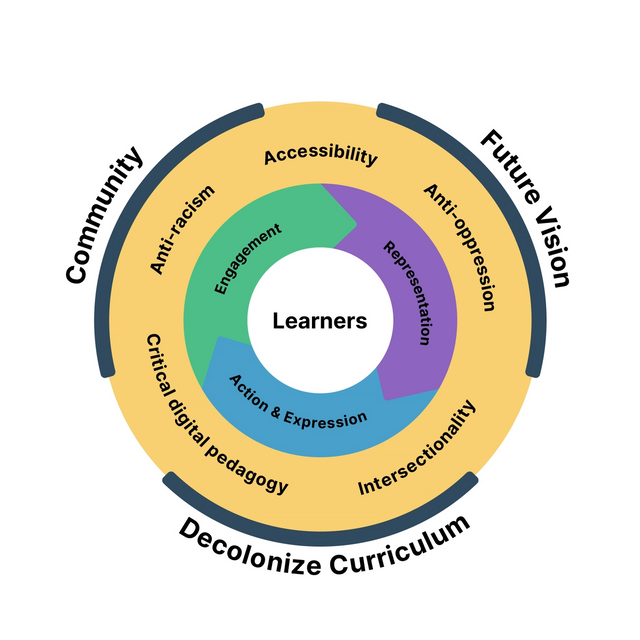Learning Objectives

Upon completion of this module, you will be able to:
- Examine the impact of barriers to inclusion on the ways that diverse learners acquire, perceive, and process information.
- Evaluate the impacts of language, symbols, symbolism, content, and display using the UDL and antiracism and anti-oppressive practice frameworks.
- Explore strategies for scaffolding and providing formative feedback that reflect and build on life knowledge and skills.
- Analyze representation options for accessibility and inclusion that reflect and respond to the lived experiences of learners.
- Reflect on the multiple ways that curriculum design and teaching practice represent content that is meaningful and relevant to learners’ lived experiences.

Students quickly receive the message that they can only be smart when they are not who they are. This, in many ways, is classroom Colonialism; and it can only be addressed through a very different approach to teaching and learning.
Consider what types of learning environments send the above message. Have you experienced this as either a learner or an educator?
In this third module, we will focus on creating inclusive learning environments by providing options for the ways course content is presented to students. The UDL principle of Multiple Means of Representation (the “what” of learning) looks at how content is delivered to and navigated by learners. What we educators communicate impacts learners in multiple ways. This principle is concerned with how learners recognize, and make meaning from, that information. Click below to explore some reasons why it is important that course content be represented in multiple ways:
Why is it important to represent course content in multiple ways?
- Learners differ in the ways that they perceive, organize, and make meaning from information presented to them.
- Educators also differ in the ways that we perceive and understand information, so, by default, we are likely to present information in the ways that are most comfortable to us or in the ways we have encountered the most in the past.
- Navigating information and sense-making is rewarding and enhances persistence in learning environments.
- Learning is enhanced when learners receive information that is connected to their lives and authentic lived experiences.
- Upon reflection, what would you add to this list that relates to the representation of content?